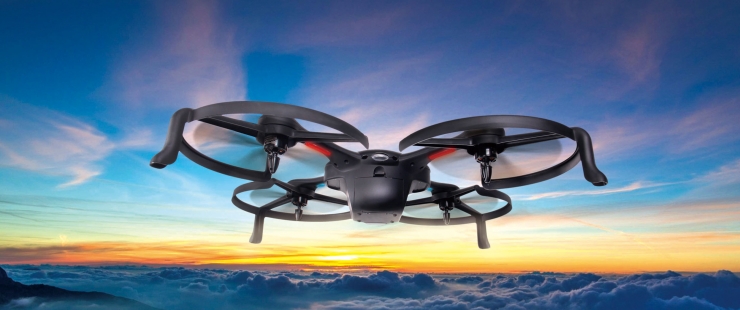
(Source: Zhihu)
Drones are one of the hottest areas in the science and technology industry in the past two years. Whether it is a country or a company, drones are indispensable in the planning blueprint. More and more companies are already exploring the use of UAVs to complete various tasks. task. At the same time, the sales volume of drones in the consumer market has also grown rapidly. The rapid advancement in technology has drastically reduced the threshold for the use of drones, and prices have gradually fallen to levels that ordinary families can afford. It is a dream.
At the same time, however, behind the rapidly emerging industry, the security problems caused by the drone's popularity are rapidly fermenting. The current multi-axis propeller UAV's anti-jamming performance and strong wind resistance are not strong enough. In actual flight, it is prone to "fighting" and the probability of accidental fall is relatively large. In addition, most drone operators have not been systematically trained, and it is quite common for novices to cause “destruction†due to operational errors. The accidental fall of a drone will not only result in the loss of property, but may even hurt human lives. Once you get to a pedestrian or property, you can create an unpredictable risk.

(The picture shows the animation "South Park" drone accident picture)
How to avoid letting drones become "killers in the air" has always been a headache for everyone who cares about the future of drones. Flock , a big data start-up firm in London, is committed to this research. They hope to analyze the urban road conditions through artificial intelligence (AI) technology, and use the data analysis of the urban environment to determine the safety of UAV flight. Estimate the risk of unmanned flying and minimize the risk of drone travel.

(Source: Sohu)
According to TechCrunch, Flock used some legitimate channels to obtain information on city buildings, people's travel, car positioning, and local weather conditions, and then transmitted these data to an estimation platform to calculate whether the drone was suitable for flight. The specific approach is to use an application software to calculate the "cost/benefit" ratio, and then perform more detailed data analysis to help insurance companies set premiums, and drone operators decide whether to undertake a specific flight.
Ed Leon Klinger, Flock’s CEO and co-founder, said in an interview: “Our idea is to be able to form a stable trend analysis in this system, so that we can integrate what we collected in a certain period of time. All data are systematically analysed, which is helpful for understanding the overall direction of the city and its changing trends, including the migration of population and traffic conditions. "
In the future, Flock hopes to use its own AI algorithm to calculate and analyze the safest sailing route and starting time of drones so that routes and voyages can be set in advance. Perhaps one day, AI technology mastered city data more accurately, and gradually explored the rules, Flock will be closer to the goal of real-time risk estimation.
Via iHLS
Recommended reading:
AIR 074 | Oxford Department Director Michael Wooldridge: AI Let Us Rethink Social Relationships
AIR 070丨August 13th Special Speech for Robots and Drones
AIR 066丨 What do investors think about artificial intelligence and entrepreneurship in the field of robotics?
